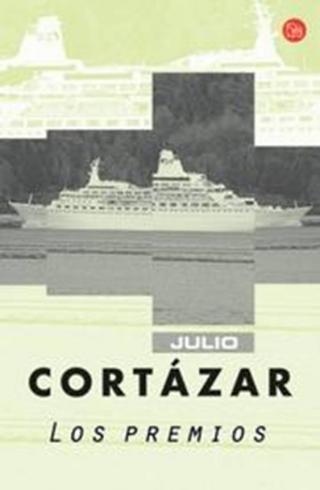Об авторе
Julio Cortázar was an Argentine novelist, short story writer, and essayist. Known as one of the founders of the Latin American Boom, Cortázar influenced an entire generation of Spanish-speaking readers and writers in the Americas and Europe. He has been called both a "modern master of the short story" and, by Carlos Fuentes, "the Simón Bolívar of the novel."
Early life:
Julio Cortázar was born on August 26, 1914, in Ixelles, a borough of Brussels, Belgium. According to biographer Miguel Herráez, his parents, Julio José Cortázar and María Herminia Descotte, were Argentine citizens, and his father was attached to the Argentine diplomatic service in Belgium.
At the time of Cortázar's birth Belgium was occupied by the German troops of Kaiser Wilhelm II. After the irruption of German troops in Belgium, Cortázar and his family moved to Zürich where María Herminia's parents, Victoria Gabel and Louis Descotte (a French National), were waiting in neutral territory. The family group spent the next two years in Switzerland, first in Zürich, then in Geneva, before moving for a short period to Barcelona. The Cortázars settled outside Buenos Aires by the end of 1919.
Cortázar's father deserted his wife when Julio was six, and the family had no further contact with him. Cortázar spent most of his childhood in Banfield, a suburb south of Buenos Aires, with his mother and younger sister. The home in Banfield, with its back yard, was a source of inspiration for some of his stories. Despite this, in a letter to Graciela M. de Solá on December 4, 1963, he described this period of his life as "full of servitude, excessive touchiness, terrible and frequent sadness." He was a sickly child and spent much of his childhood in bed reading. His mother, who spoke several languages and was a great reader herself, introduced her son to the works of Jules Verne, whom Cortázar admired for the rest of his life. In the magazine Plural (issue 44, Mexico City, May 1975) he wrote: "I spent my childhood in a haze full of goblins and elves, with a sense of space and time that was different from everybody else's."
Works:
Cortázar wrote numerous short stories, collected in such volumes as Bestiario (1951), Final del juego (1956), and Las armas secretas (1959). In 1967, English translations by Paul Blackburn of stories selected from these volumes were published by Pantheon Books as End of the Game and Other Stories. Cortázar published four novels during his lifetime: Los premios (The Winners, 1960), Hopscotch (Rayuela, 1963), 62: A Model Kit (62 Modelo para Armar, 1968), and Libro de Manuel (A Manual for Manuel, 1973). Except for Los premios, which was translated by Elaine Kerrigan, these novels have been translated into English by Gregory Rabassa. Two other novels, El examen and Divertimiento, though written before 1960, only appeared posthumously.
The open-ended structure of Hopscotch, which invites the reader to choose between a linear and a non-linear mode of reading, has been praised by other Latin American writers, including José Lezama Lima, Giannina Braschi, Carlos Fuentes, Gabriel García Márquez, and Mario Vargas Llosa.[citation needed] Cortázar's use of interior monologue and stream of consciousness owes much to James Joyce and other modernists,[citation needed] but his main influences were Surrealism, the French Nouveau roman[citation needed] and the improvisatory aesthetic of jazz. This last interest is reflected in the notable story "El perseguidor" ("The Pursuer"), which Cortázar based on the life of the bebop saxophonist Charlie Parker.
Cortázar also published poetry, drama, and various works of non-fiction. In the 1960s, working with the artist José Silva, he created two almanac-books or libros-almanaque, La vuelta al día en ochenta mundos and Último Round, which combined various texts written by Cortázar with a photographs, engravings, and other illustrations, in the manner of the almanaques del mensajero that had been widely circulated in rural Argentina during his childhood. One of his last works was a collaboration with Carol Dunlop, The Autonauts of the Cosmoroute, which relates, partly in mock-heroic style, the couple's extended expedition along the autoroute from Paris to Marseille in a Volkswagen camper nicknamed Fafner. As a translator, he completed Spanish-language renderings of Robinson Crusoe, Marguerite Yourcenar's novel Mémoires d'Hadrien, and the complete prose works of Edgar Allan Poe.
Influence and legacy:
Michelangelo Antonioni's film Blowup (1966) was inspired by Cortázar's story "Las babas del diablo," which in turn was based on a photograph taken by Chilean photographer Sergio Larraín during a shoot outside of Notre Dame Cathedral in Paris.[26] Cortázar's story "La autopista del sur" ("The Southern Thruway") influenced another film of the 1960s, Jean-Luc Godard's Week End (1967).[27] The filmmaker Manuel Antín has directed three films based on Cortázar stories, Cartas de mamá, Circe, and Intimidad de los parques.
Chilean novelist Roberto Bolaño cited Cortázar as a key influence on his novel The Savage Detectives: "To say that I'm permanently indebted to the work of Borges and Cortázar is obvious."
Puerto Rican novelist Giannina Braschi used Cortázar's story "Las babas del diablo" as a springboard for the chapter called "Blow-up" in her bilingual novel Yo-Yo Boing! (1998), which features scenes with Cortázar's characters La Maga and Rocamadour.[30] Cortázar is mentioned and spoken highly of in Rabih Alameddine's 1998 novel, Koolaids: The Art of War.
In Buenos Aires, a school, a public library, and a square in the Palermo neighborhood carry Cortázar's name.



Комментарии и оценки к книгам автора